Search Results for 'Mutinies'
10 results found.
Talk on disbandment of Connaught Rangers
‘Commemorating the armistice, reflecting on disbandment, and looking to the future’ a short talk by Dr Tony King, Connaught Rangers Association Liaison Officer, will be given at Menlo Park Hotel this Sunday November 13 at 4.30pm.
Commemorating the Connaught Rangers mutiny - a century on
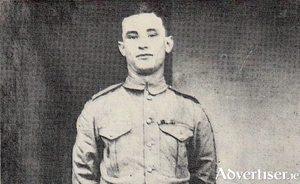
ON SUNDAY June 27 1920, a small group of Connaught Rangers, from C Company of the 1st Battalion, based at Wellington Barracks, Jalandhar, the Punjab, announced they were refusing to obey orders.
Pomp and circumstance, and one unmarked grave
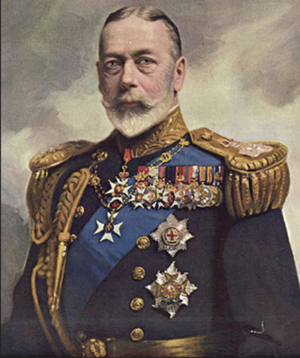
On June 12 1922 a very special ceremony took place at Windsor Castle, near London. Following the establishment of the Irish Free State the previous December, five Irish regiments, including the Connaught Rangers, the Royal Irish, the Leinsters, the Munsters, and the Dublin Fusiliers, which had served the British army with exceptional valour at times, were disbanded. It was a day of special significance for both the participants and onlookers.
‘ When I drop this handkerchief, fire and spare no man’
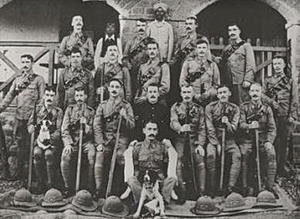
Perhaps fearing that the refusal by Irish soldiers to carry out army duties in Wellington Barracks at Jullundur, northeast India, on June 27 1920; and that the mutiny would spread to an already sympathetic native population, leading to a general protest such as at Amritsar the previous year, the army authorities quickly took decisive action. The commanding officer, Lt Col Leeds, strode into the crowd of excited and rebellious soldiers, demanding to speak to its two leaders John Flannery and Joe Hawes. He warned the men that they could be shot for this; that such behaviour only excited the natives to rebellion. Hawes, smoking a cigarette, replied that he would rather be killed by an Indian bullet than by a British one (His disrespectful attitude to his commanding officer was noted).
Two boys from Loughrea
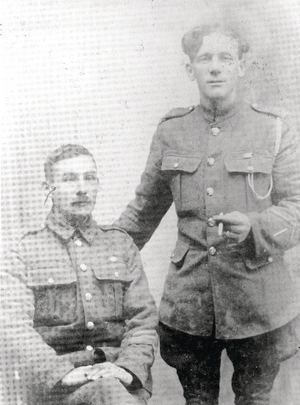
At the beginning of the last century, two boys grew up together in Loughrea. Socially they were far apart, but they were great friends. John Oliver was from a particularly poor background. His family lived in a tiny lean-to shack out on the Galway road on the edge of the town. His friend was Tom Wall, who lived in a comfortable house on Patrick Street. John enjoyed visiting their home. His friend played with a band, The Saharas, and there was often music and fun in their house, shared by his brother Ray, and their attractive sister Cissie.
Exhibition on the Connaught Rangers
The Connaught Rangers, the legendary British Army regiment whose members were drawn from the west of Ireland and who were stationed in Galway, will be subject of a new exhibition.
Galway’s military museum
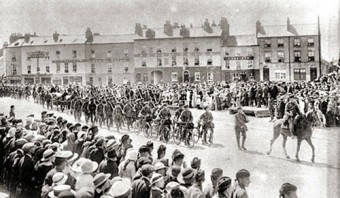
Our photograph today was taken in Eyre Square in 1922, and shows the Connaught Rangers parading through the city on their last day in Galway. It is interesting to see them on horseback, on foot, and with bicycles. As you can see in the foreground, there is a long line of soldiers standing in front of the crowd, and there is what looks like a temporary reviewing stand on the far side of the street.
We can be proud of our military heritage
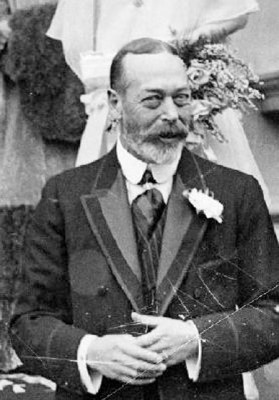
On June 12 1922 a very special ceremony took place at Windsor Castle, near London. Following the establishment of the Irish Free State the previous December, five Irish regiments, including the Connaught Rangers, the Royal Irish, the Leinsters, the Munsters, and the Dublin Fusiliers, which had served the British army with exceptional valour at times, were disbanded. It was a day of special significance for both the participants and onlookers. It was reported in the London Times.
Remembering the Connaught Rangers
For those interested in the history of the Connaught Rangers a walking tour of Galway city to seek out memorials and artefacts related to the once great regiment is planned by the Connaught Rangers Association. Galway City has many great memorials related to the once great regiment including the memorial window in Galway Cathedral, and the cannons at City Hall which have been in the city since 1857 to commemorate the involvement of the regiment in the Crimea War.The tour will start in Renmore and then move towards City Hall, Saint Nicholas Collegiate Church, and finish in Galway Cathedral.
HMS Bounty to star at the Galway Oyster Festival
The most photographed square rigged sail ship in the world, the HMS Bounty, will be part of this year’s Galway International Oyster Festival.

